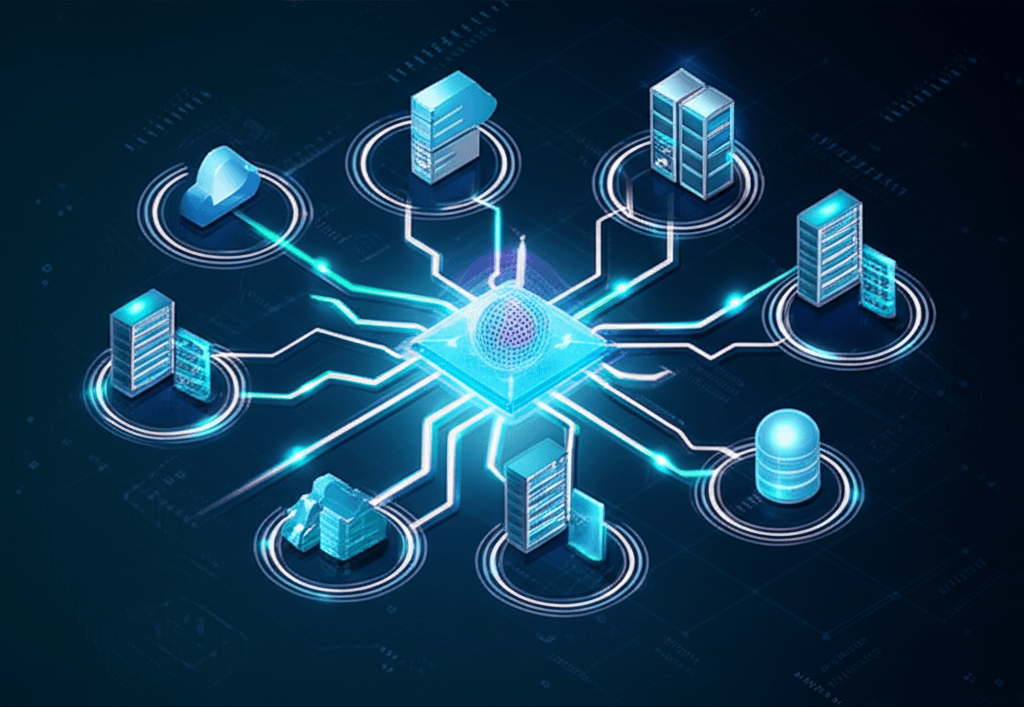Salesforce's MuleSoft Builds Central Nervous System for Enterprise AI Agents
New MuleSoft protocols position Salesforce to orchestrate secure and scalable interactions among autonomous enterprise AI agents.
July 8, 2025

Salesforce is making a significant move to standardize and control the flow of data within the burgeoning world of enterprise artificial intelligence, positioning its MuleSoft subsidiary at the center of the shift towards agent-driven software. As companies increasingly look to deploy autonomous AI agents to handle complex business processes, Salesforce is introducing a framework designed to manage how these agents communicate with each other and with existing enterprise systems. This strategy hinges on two new open-source inspired protocols, the Model Context Protocol (MCP) and the Agent-to-Agent (A2A) protocol, aimed at creating a governed, secure, and scalable environment for this new wave of automation. The initiative underscores a broader industry trend where the true power of AI is unlocked not just by the intelligence of individual models, but by their ability to interact with and act upon enterprise data securely and efficiently.
At the heart of Salesforce's strategy is the MuleSoft Anypoint Platform, which will now support these emerging standards to orchestrate AI agent interactions.[1][2] The Model Context Protocol (MCP) is designed to be the bridge between AI agents, or Large Language Models (LLMs), and a company's diverse external systems.[3] Essentially, it provides a standardized way for an agent to securely access the critical business data and logic locked within various applications.[2] With MuleSoft's new capabilities, any existing API or integration can be transformed into an MCP-compliant server, making it discoverable and usable by an AI agent without requiring custom code for each connection.[2][4] This allows an agent to move beyond simple data retrieval to executing actions with governance, such as querying a knowledge base for an error signature and then restarting a cloud service.[5] This addresses a fundamental challenge for enterprises: making their vast repositories of data and system functionalities understandable and actionable for AI.[2] By adopting an open-standard approach, Salesforce aims to create a unified method for building AI ecosystems, avoiding the fragmented, custom-built adapters that would otherwise be necessary.[2]
Complementing MCP is the Agent-to-Agent (A2A) protocol, which focuses on enabling secure and scalable communication directly between different AI agents.[6][7] As enterprises deploy multiple specialized agents—one for processing orders, another for checking inventory, and a third for calculating pricing, for example—the need for them to collaborate becomes paramount.[6] The A2A protocol, based on an open-source framework from Google, defines a standard for how these agents can discover, invoke, and coordinate with one another.[6][7] MuleSoft's A2A Connector allows developers to build multi-agent workflows, breaking down complex business processes into modular, manageable interactions.[6] An order processing agent, for instance, could seamlessly communicate with inventory and pricing agents to confirm an order.[6] This system of interconnected, specialized agents forms the foundation of what Salesforce calls the "agentic enterprise," where automated workflows are handled by a coordinated digital workforce.[7] The A2A support includes a centralized registry for agent discoverability and governance features to secure communications and filter sensitive information.[6]
The push towards an agent-driven enterprise is a core component of Salesforce's broader AI strategy, centered around its Agentforce platform.[8][9] Agentforce is designed for building and deploying these autonomous AI agents across the Salesforce ecosystem, aiming to automate complex tasks and enhance productivity.[8][10] Salesforce envisions a future with a billion-strong workforce of autonomous bots, a vision backed by significant investments, including a reported $8 billion offer for the data integration firm Informatica to bolster its data management capabilities.[11] The integration of MuleSoft's new protocol support with Agentforce allows customers to extend the platform's capabilities, fostering greater interoperability while maintaining control.[5] This strategic pivot is a response to the growing demand for enterprise AI solutions that can deliver tangible business outcomes, such as accelerating sales cycles and reducing operational costs.[8] According to a 2025 Salesforce report, 93% of IT leaders are planning to deploy autonomous agents within the next two years, signaling a massive shift in the enterprise software landscape.[10]
The implications of this strategy are significant for both Salesforce and the wider AI industry. By establishing a standardized framework for agent interaction, Salesforce aims to position itself as the central nervous system for enterprise AI, making its platform indispensable for companies looking to automate complex processes.[12] This approach creates significant switching costs for customers who build their AI ecosystems around MuleSoft and Agentforce.[12] It also addresses key enterprise concerns around security, governance, and control, which are often barriers to AI adoption.[12][13] For the industry, the promotion of open standards like MCP and A2A could help to avoid a fragmented market of proprietary AI integrations, fostering a more interoperable ecosystem.[2][7] However, the success of this vision depends on widespread adoption of these protocols and Salesforce's ability to demonstrate clear, measurable benefits to businesses navigating the complexities of AI implementation.[8] The move signals a maturation of the enterprise AI market, shifting the focus from the capabilities of individual AI models to the critical infrastructure needed to deploy and manage them at scale.
Sources
[2]
[3]
[6]
[7]
[8]
[9]
[10]
[11]
[12]
[13]